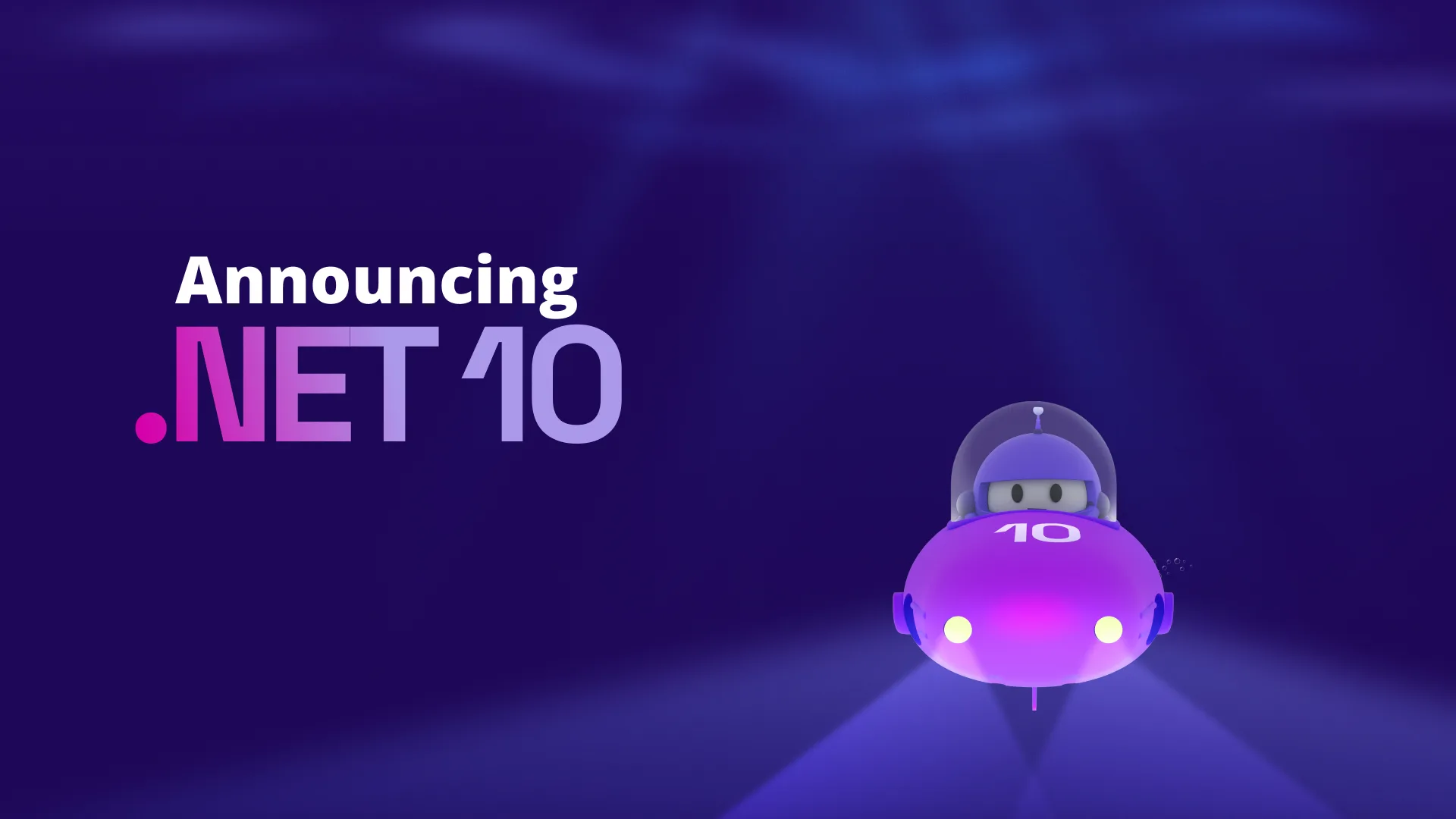The world’s most popular IDE just got an upgrade.
.NET Blog
Free. Cross-platform. Open source. A developer platform for building all your apps.
Featured posts

Announcing .NET 10
Announcing the release of .NET 10, the most productive, modern, secure, intelligent, and performant release of .NET yet. With updates across ASP.NET Core, C# 14...
Latest posts

Updating the MVC Facebook API
Over the past several months Facebook made changes to their application development APIs that were incompatible with the MVC Facebook support. We have been working on updates while the Facebook API kept evolving, and on 4/30/2014 Facebook announced a two-year stability guarantee. This was a fantastic announcement because this ensured a similar stability for ASP.NET MVC developers developing Facebook applications. We've fixed the Facebook package and renamed it to Microsoft.AspNet.Facebook. This package is now available on NuGet. Hereare the issues that we’ve fixed. If you’re new to the world of Fac...

QueueBackgroundWorkItem to reliably schedule and run background processes in ASP.NET
Stack Overflow is loaded with questions on how to reliably run a resource-intensive process on a background thread. See so0, so1, so2, so3, so4, so5, so6, so7, so8, so9, so10 . Examples of long-running tasks include sending email, image processing, and generating a PDF file. When Phil Haack was a program manager on the ASP.NET MVC team, he wrote the definitive blog on the inherent unreliability of running background tasks on ASP.NET. While Phil’s blog is a good read, there are now three supported approaches to launching long-running process on ASP.NET: In addition to the three supported appro...

ASP.NET vNext in Visual Studio “14” CTP
A few weeks ago at TechEd North America we announced ASP.NET vNext. Today we are releasing the first preview of Visual Studio “14” CTP, which will have support for creating and debugging ASP.NET vNext applications. This post will cover what is ASP.NET vNext and give you a walkthrough of what you can do in this preview. ASP.NET vNext has been designed to provide you with a lean and composable .NET stack for building modern cloud-based apps. ASP.NET vNext will build on .NET vNext. .NET vNext is the next major release of .NET Framework. .NET vNext will have a cloud optimized mode which will have a smaller footprin...

Announcing web features in Visual Studio “14” CTP
Today, the Visual Studio team announced the release of Visual Studio “14” CTP version 14.0.21730.1 DP. Our team added features to support ASP.NET vNext development. We will have future blogs to talk about some of the features in detail. Note, Visual Studio side by side support is not available on this early build. Do not install this CTP on a machine with any other version of Visual Studio installed. ASP.NET vNext Templates ASP.NET vNext projects can be created using C# templates with “ASP.NET vNext” in the name. To generate an MVC 6 project, select “ASP.NET vN...

NuGet Package Download Stats
Lies, Damned Lies, and Package Statistics We've been getting reports about package download statistics being inconsistent with packages' overall download counts and people have asked us which numbers to believe. We've investigated the inconsistencies and found that due to a very subtle bug, you can't trust the statistics right now, but you'll be able to trust them again starting June 26th.. You can however trust the all-time download counts shown in search results and on the package details pages. Only the "Statistics" tab on the gallery is affected. Background In order to fully explain the issue, we need to ...

Release Candidates for ASP.NET MVC 5.2, Web API 2.2 and Web Pages 3.2
The release candidate NuGet packages for ASP.NET MVC 5.2, ASP.NET Web API 2.2 and ASP.NET Web Pages 3.2 are now live on the NuGet gallery!Download this releaseYou can install or update the release candidate NuGet packages for ASP.NET MVC 5.2, ASP.NET Web API 2.2 and ASP.NET Web Pages 3.2 using the NuGet Package Manager Console, like this: Prerequisites for this release What’s in this release?This release primarily includes great new features for Web API OData v4 as summarized below but has bug fixes and minor features that bring in a lot more goodness to MVC, Web API, and Web Pages:ASP.NET MVC 5.2 Rele...

.NET Native Deep Dive: Optimizing with Runtime Directives
This post was authored by Morgan Brown, a Software Development Engineer on the .NET Native team. It is the fifth post in a series of five about Runtime Directives. Please see the first posts in this series, Dynamic Features in Static Code, Help! I Hit a MissingMetadataException!, Help! I Didn't Hit a MissingMetadataException!, and Making Your Library Great, before reading this post. The previous posts in this series are about getting your app working with .NET Native, but you don’t want just working. You want excellent. We’ll focus on how to tune your runtime directives and other dynamic behavior to make your ...

.NET Native Deep Dive: Making Your Library Great
This post was authored by Morgan Brown, a Software Development Engineer on the .NET Native team. It is the fourth post in a series of five about Runtime Directives. Please read the first post in this series, Dynamic Functionality in Static Code, before reading this post. As a .NET library author, you don’t necessarily have to do anything to have your library work with .NET Native. That said, your library might use some patterns that create extra burdens on app developers using your library. Let’s talk about an example and how to make it better. If you haven’t worked with Runtime Directives befor...

.NET Native Deep Dive: Help! I Didn’t Hit a MissingMetadataException!
This post was authored by Morgan Brown, a Software Development Engineer on the .NET Native team. It is the third post in a series of five about Runtime Directives. Please see the two posts in this series, Dynamic Features in Static Code and Help! I Hit a MissingMetadataException!, before reading this post. Sometimes the only thing worse than having your app throw an exception is having it not throw an exception (but do the wrong thing anyway.) This post will examine certain corner cases where .NET Native compiled apps might fail due to missing reflection information without throwing a MissingMetadataException an...
